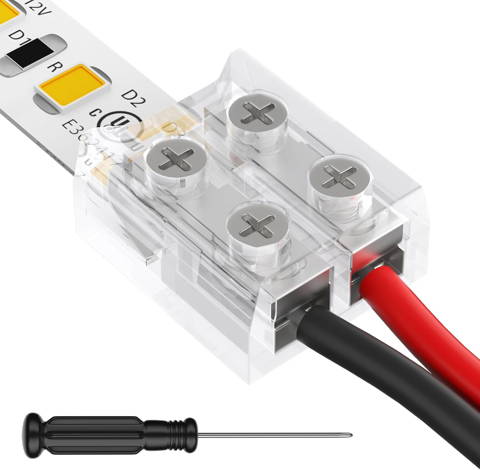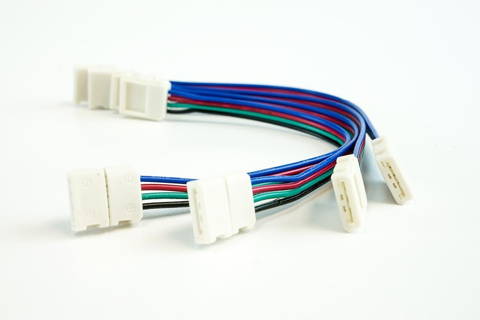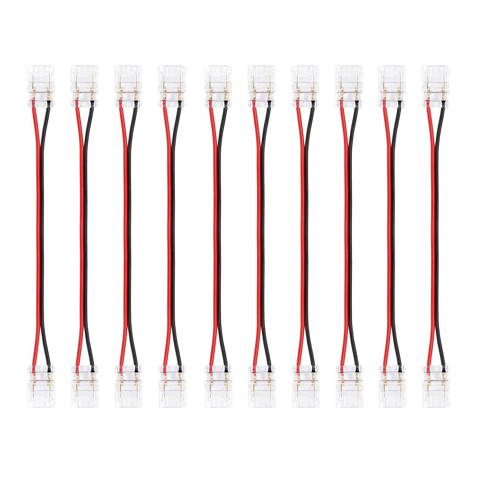Introduction
LED strip lights have revolutionized home, commercial, and automotive lighting, offering flexibility, energy efficiency, and customizable ambiance. Whether you're lighting under cabinets or outlining architectural features, installing LED strips requires reliable electrical connections. Here’s where two options arise: soldering the wires or using a solderless connector like an LED strip connector.
Both methods have pros and cons. This comprehensive guide breaks down the differences, helping you decide which connection method is best for your needs.
Understanding LED Strip Connections
- Steady power supply across the strip
- Consistent light output without flickering
- Long-term durability and safety
What Are Solderless Connectors?
- Gapless Connectors: Provide clean, straight-line connections
- L-Shaped Connectors: Ideal for 90-degree turns or corners
- T-Shaped or X-Shaped Connectors: Useful for branching LED lines
- Pigtail Connectors: Include short wire leads for extending or linking to power supplies
Pros of Solderless Connectors:
- No tools or soldering required
- Quick to install — ideal for beginners and DIYers
- Reusable in many cases
- Available in waterproof variants
- Potential for loose connections over time
- Bulkier than solder joints, which may affect aesthetics in tight spaces
- May not support high current loads as reliably as soldered joints
|
|
|
|
Soldering LED Strip Lights: The Traditional Method
- Extremely reliable and secure connection
- Slim and discreet joints — great for design-focused applications
- Handles higher power loads with ease
- Resistant to movement, vibration, or outdoor wear
- Requires tools and practice — not beginner-friendly
- Time-consuming, especially on large projects
- Risk of damaging the LED strip if done improperly
- Permanent — not easily adjustable or removable
Solderless Connectors vs Soldering: A Detailed Comparison
| Factor | Solderless Connector | Soldering |
| Ease of Use | Plug-and-play; no skills needed | Requires soldering tools and experience |
| Installation Time | Fast; ideal for quick setups | Slower; especially for multiple connections |
| Durability | Good, but may loosen over time | Excellent; extremely secure and long-lasting |
| Aesthetic | Slightly bulkier; visible clips | Clean, flat, and minimal |
| Flexibility | Easily adjustable or replaceable | Permanent unless desoldered |
| Cost | Low to moderate per piece | Low cost if you already have tools |
| Best Use Case | DIY, temporary setups, tight deadlines | Professional, permanent installations |
When Should You Use Solderless Connectors?
DIY Home Projects: Perfect for non-technical users who want to add ambient lighting to shelves, TVs, or bedrooms.
Temporary Installations: Useful for rentals, events, or seasonal decorations where reversibility is important.
Quick Fixes: If an LED strip segment stops working, connectors can bridge gaps without full rewiring.
Tight Deadlines: You can finish a complete install in minutes using just a pair of scissors and your fingers.
When Is Soldering the Better Choice?
Tips for Choosing the Right LED Strip Connector
Common Mistakes to Avoid
Conclusion
- For fast, easy, and flexible installations, go with LED strip connectors.
- For professional, high-load, or permanent setups, choose soldering for its unmatched reliability.
About HitLights:


 Terminal block connector
Terminal block connector RGB Connector and Extension
RGB Connector and Extension Single Color Connector and Extension
Single Color Connector and Extension